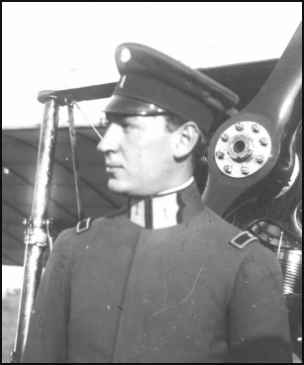
1893-1913 English Version |
 |
Courtesy of Eloy Martín |
|
via email from Eloy Martín, The surname Origone corresponded to a family of Genoese origin of recognized experience in Villa Mercedes, San Luis province. Rafael Origone (or Origoni), a native of Genoa, who owned a business that operated for a long time in the neighborhood adjacent to the railway station. I was married to Dolores Pereira who died on August 5, 1908. The couple had a prolific family of six children who were born: Rafael, Ramona, Manuel Antonio, Geronimo, and Adolfo Antonio, Nicolas, Jose Antonio, Oreste, Rafael, Manuel Felix, Dolores and Amelia. Of all the offspring were married only four children: Nicholas Terzaga with Amelia, Jose Antonio Maria Isabel Barreiro, Dolores with Felix Quiroga and Amelia contracted liaison with Dr. Valentine Luco. Manuel Felix Origone was born in Villa Mercedes on January 6, 1893. He joined the Military College on 1 September 1908, then lived in Av. de Mayo 984. Egresó as an artillery lieutenant with the order of merit No. 9 advocacy No. 35 on December 31, 1910. It was intended to serve in the Regiment shells with 1 seat in Campo de Mayo in charge of Lieutenant Colonel Eduardo Romulo Tello. On May 10, 1912 was accepted as a partner of Aero Club Argentino together with the gentlemen: Henry L. Green (Jr.), Jorge Amuchástegui, Lieutenant Francis de Sales Torres, Captain Francis Reynolds, Lt. Victor Mayo, Raul E. Subteniente Diaz, Lieutenant Albarracín Alberto Gonzalez, Adolfo J. Captains Ibañez and Eduardo Maligne, Alberto J. Tenientes Castro, Carlos Gimenez, and Ubaldo Joaquin Andres Estrada; lieutenant Horacio Cavenago, Oscar Lozano, Emilio Daúl and Thomas A. Alegro. Created the Military Aviation School on August 19, 1912, Origone was presented as candidate, joined in August and offered to train its own plane, a Bleriot XI equipped with 50 hp engine Gnôme who bought clothing in Eu ¬ in 1912 in order to educate in the arts of flight and made available to the Military Aviation School in order to boron in the queue for ¬ ¬ mation from other categories of the army and was present at the inauguration of the institute. On September 5 began courses in military Aerostar Park aerostatic of Aero Club Argentino in the neighborhood of Belgrano, with a public event organized by the steering committee of the institution headed by Engineer Alejandro Jorge Newbery. Attended by the Minister of War, Major General Gregorio Velez, Colonel Martin Jose Vicente Rodriguez, Lieutenant Colonel Engineer Enrique Carlos Alberto Mosconi and Captain Adolfo Cueto and witnessed the first ascent of military instruction of the globe Eduardo Newbery, led by engineer Alberto Roque masks with el subteniente Origone and Lieutenant Melchor Frigate of Zechariah School. The historic flight took off at 10:45 pm to fall in the Buenos Aires locality of Domselaar at 12:10 pm. On December 4 was performed the official opening of the aviation courses. The officers appointed by ministerial decision of November 27 were presented at 8 o'clock in the morning, becoming the director's orders lieutenant colonel Arenales Uriburu and instructors fees, members of the governing board engineers Jorge Newbery and Alberto R. Masks. After the presentations of practice, Mr Uriburu made timely thoughts on the flight mechanic, highlighting its indisputable usefulness and entrusted to new students prudence necessary to avoid all those excesses that could determine accidents, whose effects would be good to unhealthy environment around at the moment warplanes. Moments later, the pilot graduate of Frigate Lieutenant Melchor Z. Escola, head of the troops involved in aeronautics, and the lieutenant Manuel F. Origone, evolved in the Farman biplane. Completed these flights, officials recently admitted as passengers were taken by the two aviators and engineers cited Newbery and Macias, who later returned after, but on Bleriot monoplane, reaching the first 900 meters high and fall rapidly and marked inclination . On December 20 in El Palomar won the brevet Pilot Aviator No. 17 issued under the rules of the International Aeronautical Federation ¬ tional becoming the second official subs ¬ ¬ der quote in access to this title. He was promoted to Lieutenant on January 15, 1913. The accident In January 1913, efforts by the Social Club "Mar del Plata", the Aero Club Argentino organized a "raid" air between the cities of Buenos Aires and Mar del Plata, as part of the celebrations organized in this seaside resort and with reason the opening of the luxurious promenade that characterizes. Participants of this flight aviators, Alberto Roque masks, Paul Cas ¬ taibert, Paul Theodore Fels and Heinrich Lübbe. At 4:38 am on January 19 took off from El Palomar Lübbe and masks, 5:10 Origone and Fels and 4:25 hours from Villa Lugano Paul Castaibert. Nearly 6 hours was surprised at the level of Domselaar by a storm front that caused the downfall of his plane from 250 meters high. Near the site of the collapse were some hunters fixing damage your car, and before the episode ran to the scene, helping the pilot. These gentlemen: Alfredo Caraffi, Carlos Arrue and Dr. Peter Groppo had to break one of the wings to reach the pilot. Groppo still lived and found that his pulse latía normally, but the doctor did not have all kinds of elements and the pilot had multiple fractures, among other column and the base of the skull, so that her pulse began to fail, and the died twenty minutes before the impotence of the physician. The fate of the other pilots on that flight was also adversely: Lübbe masks and had to abandon in the town of Jeppener, Fels landed at General Belgrano and Castaibert in the town of Dolores. The plane After his death the wreckage were taken to the Military Aviation School, shortly after it was donated by his family and completely rebuilt under the leadership of Technical Director of the Military School: Engineer Alberto Roque mask with the mechanic of Russian origin Paul John Parasochka (also named John Molberto), received tuition No. II and was christened "Origone" being able to fly in the first week of September and flown on 26. A few months later, on November 21, "Origone" plane starred in the first air crash happened in our country. A little decolar from El Palo ¬ sea, crossed the line lí ¬ Flight Student Marichal and both fell to earth without being registered after ¬ ¬ tional personal misfortunes. Re ¬ stopped completely at school for the second time, par ¬ ticipó with Bleriot XI Bis-80 hp in the red side, the first military exercises with aviation support, rea ¬ lizadas between 17 to April 24 , 1914 in Villaguay, ¬ tre In Rivers. The plane was on deposit in September 1919 and then was deprogrammed. On January 19, 1936 was inaugurated in Villa Mercedes airfield Lieutenant Manuel Felix Origone with the assistance of military and naval squadrons On January 19, 1942, by Decree No. 110695 insert in Military Bulletin No. 3762, Part 2 was determined this as a "Day of the Dead by Aviation" in memory of the Holocaust of Lieutenant Origone. On January 21, 1970, was proclaimed by Precursor Act and Be ¬ nemérito of Aeronautics Argentina (Aeronautical Pú ¬ public Bulletin No. 2100). Yet despite the warplanes stationed in placing at its disposal a plane himself and collaborating with the donation of valuable elements for its implementation is in ¬ Military Aviation School, did not reach a diploma as aviator in the Army, making this a fitting recognition ¬ Naja home to his career. The monument It was erected in the town of Villa Mercedes and, as expressions of artist Roberto Tessi: "funereal monument is the more important that the province has, by its dimensions and materials that were used." It is located in the heart of the station, compared to the parental home of the aviator, between Avenue Mitre, Juan B. Fair and the former Paris street (today Av. Origone Aviator), compared to the former train station to honor the memory of the first victim of Military Aviation. For its dimensions and materials that were used is a sculpture in Carrara marble by the artist Arturo Tomagnini, the initiative arose through a subscription service sponsored by the newspaper La Prensa in 1914, and from a letter to the mayor Municipal Villa Mercedes dated August 3, 1916 by the Aero Club Argentino. Proceedings before the authorities in St. Louis, according to an article published by this newspaper on January 6, 1917, were made by his brother Jose Antonio. The Ministry of War made the relocation of the artwork that was formally handed over by the Acting Chairman of the Aero Club Argentino: Engineer Ernesto Newbery and inaugurated on July 8, 1917. In 1956 the Rotary Club of Villa Mercedes initiated efforts for the transfer of the remains of Lieutenant Origone from the cemetery of Chacarita (Federal Capital) to that monument, which was published by the daily La Razon in a note dated 5 November. Finally on 1 December 1962 his remains were placed at the foot of the monument that honors his memory. There are now locations, and a significant amount of streets, neighborhoods, schools and institutes that bear his name. Eloy Martin - Argentina |
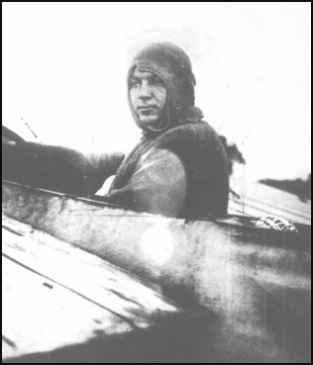 |
Courtesy of Eloy Martín |
|
The accident In January of 1913, by managements of the Social Club “Sea of the Silver”, the Aero Argentine Club organized a “aerial raid” between the cities of Buenos Aires and Sea of the Silver, like part of the festejos organized in this bath city and in the occasion of the inauguration of the luxurious boulevard that characterizes it. The aviators, Alberto Roque Mascías, Pablo Cas¬taibert, Pablo Teodoro Fels and Heinrich Lübbe participated in that flight. |
 |
Courtesy of Eloy Martín |
| To 4:38 hours of the 19 of January took off from the Palomar Lübbe and Mascías, to 5:10 Origone and Fels and 4:25 horasm from Villa Lugano Pablo Castaibert. |
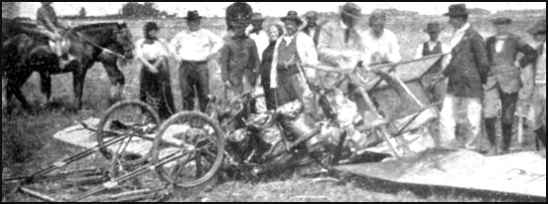 |
Courtesy of Eloy Martín |
| Near the 6 hours it was surprised the height of Domselaar by a storm front that caused the fall of its airplane from 250 ms of height. Near the place of the fall they were hunters fixing a flaw of its car, and before the episode they ran to the place, helping to the unfortunate pilot. These gentlemen: Alfre-do Caraffi, Carlos Arrué and doctor Pedro Groppo had to break one of the wings to arrive at the pilot. Groppo verified that still it lived and that its pulse barked normally, but the doctor lacked all type of elements and the pilot had manifold fractures, among others the column and the base of the skull; he is so its pulse began to fail and, to the twenty minutes died before the impotence of the doctor. |
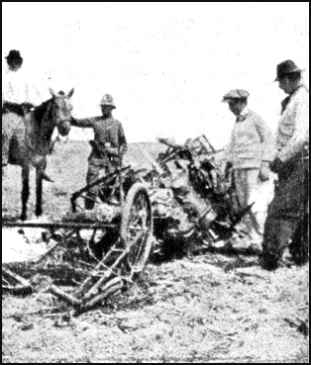 |
Courtesy of Eloy Martín |
|
The luck of the other pilots in that flight also was to them adverse: Lübbe and Mascías had to stop in the locality of Jeppener,
Fels landed in General Belgrano and Casgtaibert in the locality of Dolores. According to his service record was promoted to lieutenant on 15 January The airplane After their death the rest of the airplane were transferred to the Military aviation school, soon after it was donated by its completely reconstructed family and under the direction of the technical Director of the Military school: Engineer Alberto Roque Mascías with the mechanic of Russian origin Pablo Juan Parasochka (also call Juan Molberto), received the matriculation Nº II and was baptized “Origone” being in flight conditionses in the first week of the month of September and flown day 26. Few months later, the 21 of November, the “Origone” airplane carried out the first happened aerial shock in our country. Soon after dequeuing from the Palo¬mar, it crossed the lí¬nea of flight of the Student Marichal and both fell to earth without perso¬nales misfortunes would be regis¬trasen. Re¬parado totally in the school for the second time, par¬ticipó with the Bleriot XI-Bis of 80 HP, in the red side, the first military maneuverses with air support, rea¬lizadas between days 17 to the 24 of April of 1914 in Villaguay, En¬tre Ríos. The airplane was in deposit in September of 1919 and soon he was desprogramado. The 19 of January of 1936 the aerodrome was inaugurated in Villa Mercedes Lieutenant Manuel Felix Origone with the attendance of military and naval squadrons The 19 of January of 1942, by Military Bulletin Decree inserted Nº 110695 Nº 3762, 2ª Part was determined this like “Day of deads by Aviation” in memory of holocausto of Origone Lieutenant. The 21 of January of 1970, was declared by Law Precursor and Be¬nemérito of the Argentina Aeronautics (Aeronautical Bulletin Pú¬blico Nº 2100). In spite of having itself still outstanding in the Military aviation placing to his disposition an airplane of own and collaborating with the donation of valuable elements for his application in the Escuela de Military Aviación, it did not reach to graduate like aviator in the Army, being constituted this recognition a worthy homage to his trajectory. |
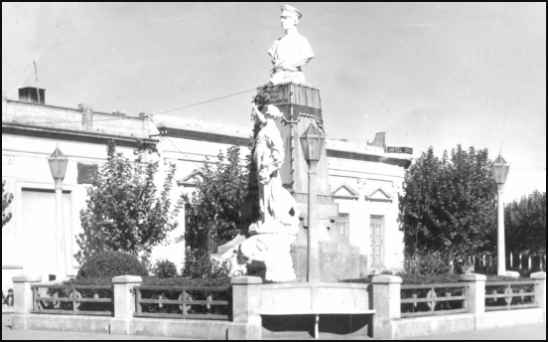 |
|
The monument It was erected in the city of Villa Mercedes and, according to expressions of the artist Roberto Tessi: “it is the more important funeral monument that it has the province, by its dimensions and the materials that were used”. It is located in center of the zone of the Station, in front of the paternal house of the aviator, between avenue Mitre, Juan B. Just and the old Paris street (today Flying Av. Origone), as opposed to the ex- Station of Trains to honor the memory of the first victim of the Military aviation. By its dimensions and the materials that were used is a sculpture made in marble of Carrara by the artist Arturo Tomagnini, the initiative arose thanks to a public subscription promoted by the newspaper the Press in 1914; and from a letter directed to the municipal intendant of Villa Mercedes with date 3 of August of 1916 by the Aero Argentine Club. Llas diligences before the authorities of San Luis, according to an article published by that newspaper the 6 of January of 1917, were made by their brother Jose Antonio. The Ministry military made the transfer of the art work that formally was given by President Interino of the Aero Argentine Club: Engineer Ernesto Newbery and inaugurated the 8 of 1917 July. In 1956 the Rotary Club of Villa Mercedes initiated the managements for the transfer of the rest of Origone Lieutenant from the cemetery of the Chacarita (Capital Federal) to the referred monument, initiative that was published by the newspaper the Reason in a dated note the 5 of November. Finally 1º of December of 1962 their rest were placed on the foot of the monument that honors its memory. At the present time localities exist, and an important amount of streets, districts, schools and institutes that take their name. |
|
|
|
Personal communication from Eloy Martín If you have any information on this pioneer aviator please contact me. E-mail to Ralph Cooper |


|